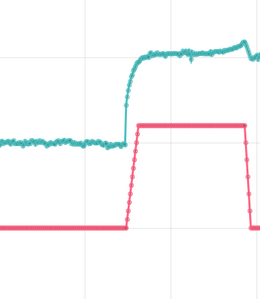Who's your electricity provider and what's your tariff?
Posted by: @old_scientistIs it best to cycle daily on a 80-20-80% regime
That's what most people do if the system offers such a configuration.
Posted by: @old_scientistand how does the charge / discharge rate affect the battery given it can charge at 1.7kW, 3.3kW or 5kW?
There's an obvious risk of damage due to over-charging if your inverter/charger is permitted to reach the 100% level whilst still delivering maximum current.
It's best if the charger successively reduces the current as it approaches 90%.
But very few do this...
... even if the inverter manufacturer has stated that his product 'is compatible with' your chosen battery unit.
Whether the BMS can offer protection will depend on how much current it can shift away from the cells that reach their peak-voltage first.
Most BMS units are passive. They detect the cell with the highest voltage and burn off some of this using a resistor.
I prefer active BMS units, which take energy from the cell with the highest voltage, and deliver it to that with the lowest voltage.
If the general public were better informed on such matters, then I'd expect the inverter/charger manufacturers to include a reduced-current feature when approaching maximum charge.
But there are very few consumers who would even understand the meaning of such a feature if it appeared on the specification sheet.
Useful Energy Technology is being held back by lack of knowledge.
Save energy... recycle electrons!
@transparent Don’t know about other manufacturer’s offerings but in the case of the Tesla Powerwalls, the app indicates that once charging reaches the 90% level, the charging rate reduces and tails off completely as the battery reaches 100%. In my own case, with a 27KWh system, charging runs at ~10 KW and upon reaching the 90% level, starts dropping so that by the time it reaches ~95%, it has dropped to ~3.5 - 4 KW. and continues to drop further as it reaches close to full up.
Regards, Toodles.
Toodles, he heats his home with cold draughts and cooks his food with magnets.
That's the sort of good design we would expect from Tesla @toodles.
There is another reason why an inverter/charger should incorporate current limiting
... it's better for the grid.
If a home battery is to be recharged from the grid, then we don't want sudden on/off surges... especially at the start of a cheap-rate period.
Inverters should ramp-up their demand on the grid over several minutes, allowing time for NESO to adjust their draw from the available mix of energy sources.
The red line shows an inverter ramping up the current it draws from the grid in twelve steps over a period of about 5 minutes.
The blue line has been superimposed, and shows the voltage measured at the battery terminals as a consequence.
Save energy... recycle electrons!
Posted by: @toodles@transparent Don’t know about other manufacturer’s offerings but in the case of the Tesla Powerwalls, the app indicates that once charging reaches the 90% level, the charging rate reduces and tails off completely as the battery reaches 100%. In my own case, with a 27KWh system, charging runs at ~10 KW and upon reaching the 90% level, starts dropping so that by the time it reaches ~95%, it has dropped to ~3.5 - 4 KW. and continues to drop further as it reaches close to full up.
Regards, Toodles.
Same here @toodles, my single PW3 can charge at upto 5kW, and as it approaches 100% I see the rate fall off, sometimes only charging at a few hundred watts once it gets to 99%.
@transparent is it generally better for battery health to charge slowly (say at 2kW) or flat out at 5kW (other than the last few percent, as previously discussed), or is that going to make little difference to the lifespan of the cells (the important thing being the last few percent, not to overcharge)? I try to encourage mine to charge slowly so that more of the input power can be met by DC-coupled solar, and thus minimise any AC to DC conversion losses from grid charging, but that's more about maximising efficiency and minimising conversion losses than lifespan of the battery.
Samsung 12kW gen6 ASHP with 50L volumiser and all new large radiators. 7.2kWp solar (south facing), Tesla PW3 (13.5kW)
Solar generation completely offsets ASHP usage annually. We no longer burn ~1600L of kerosene annually.
@old_scientist There is an option in the Tesla app that controls the grid charge and can be set to ‘off’ if required which would ensure that only your very productive solar array charges the PW3. Regards, Toodles.
Toodles, he heats his home with cold draughts and cooks his food with magnets.
-
Ripped Off: How UK Homeowners Are Paying Gas Prices for Wind Energy
1 month ago
-
Agile: average import cost vs other tariffs?
4 months ago
-
Switching tariff in Winter? or stick year round?
11 months ago
-
Confusion over Octopus Tariffs
1 year ago
-
Octopus tariffs - API & choosing best tariff
2 years ago
Currently viewing this topic 1 guest.
- 26 Forums
- 2,131 Topics
- 46.8 K Posts
- 30 Online
- 5,656 Members
Join Us!
Podcast Picks
Latest Posts
-
RE: Thermostat for Ideal Logic Air with 3 zone support
No harm at all in plumbing it as 3 zones, I would have ...
By JamesPa , 53 minutes ago
-

RE: Anyone still weathering it out with Agile?
Thank you Major, if changes are afoot, I suppose we wil...
By Toodles , 1 hour ago
-
RE: ASHP heat output monitoring
@carlo I see there is a discussion in Facebook user gro...
By Tim441 , 6 hours ago
-
RE: New Vaillant aroTherm Plus in black - When will it come to the UK?
@editor @sandy I tried contacting them via Whatsapp b...
By brad , 1 day ago
-
RE: Flexi-Orb Heat Pump Scheme: A Game-Changer for the UK's Heat Pump Industry
MCS have set a potential trap in the new version of MCS...
By JamesPa , 1 day ago
-
RE: Who has a V2G EV installation
General comment on battery care... I guess if ev is on ...
By Tim441 , 2 days ago
-

RE: Heat Pump Servicing & Maintenance – Good Value or Rip-Off?
@old_scientist I have never cleaned the mag filter myse...
By Toodles , 2 days ago
-
@old_scientist like for like comparisons are almost imp...
By Tim441 , 2 days ago
-

RE: Who's your electricity provider and what's your tariff?
@old_scientist There is an option in the Tesla app that...
By Toodles , 2 days ago
-

RE: Mitsu Wireless Controller and MelCloud
On the FTC5 I think this requires the dip switch on the...
By Abernyte , 2 days ago
-
RE: Octopus Cosy & Octopus EV + bidirectional smart tariff, together. What, eh?
@old_scientist me too. Just installed my new heat pump ...
By Eliuccio , 4 days ago
-
RE: Is your heat pump insured?
Yup just spoke to Privilege to inform them of my impend...
By Scalextrix , 4 days ago
-

RE: Forum updates, announcements & issues
Just to keep everyone in the loop, as the site continue...
By Mars , 4 days ago
-

RE: Fast DHW setting on Midea (Clivet) heat pump
@simon-w, is this something you could potentially assis...
By Mars , 5 days ago
-
RE: Share Your Experiences with Heat Pump Manufacturer Support
Fwiw I called my installer out for the first time a few...
By JamesPa , 5 days ago
-
RE: Long term efficiency degradation
@jamespa yes as I thought thanks. We have a reaso...
By Scalextrix , 5 days ago
-

RE: Sunamp Thermino Heat Battery
@jamespa A few days after the installation had been com...
By Toodles , 6 days ago
-
RE: Planning Permission May 2025
Fair enough. I have read the legislation and MCS020a ...
By JamesPa , 1 week ago
-
RE: How do I choose a single room MVHR to prevent losing heat in my bathroom ?
An update on the Heatsava. It is the most difficult thi...
By heat-pump-newbie , 1 week ago
-
RE: Renewables & Heat Pumps in the News
this document extensively describes (in a non-blame, ne...
By Judith , 1 week ago




